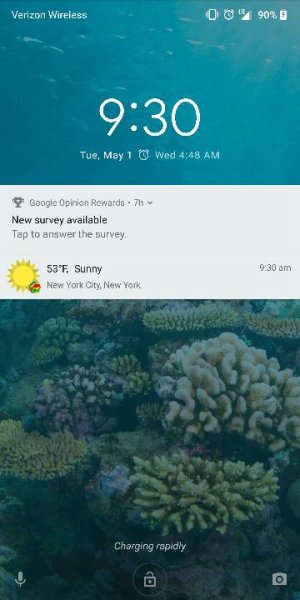- Jan 6, 2011
- 1,984
- 29
- 48
I am trying to get a better understanding of what causes the phone to display "Rapid Charging." This may apply to other phones as well (e.g. Samsung's "Fast" charging).
Is there a wattage point that triggers the notification or is there some sort of message in the way the power is being delivered that triggers it?
This all stems from a search I am conducting to find a portable battery that will rapid charge my Pixel 2 but I am finding one that I have is doing it quickly, no notification. Amazon reviews comment on batteries charging their phones quickly but not necessarily getting that indicator. I don't want to waste time and money looking for one that makes that word appear on screen when it really doesn't matter much.
For the record - a portable battery I used that triggered the fast charge indicator on my Mate 9, but no indicator on the Pixel 2, charged my Pixel 2 from 55% to 90% in 35 minutes. But if there's some battery out there that will provide the same charge during a 20 min ride across the city, that does make a difference for my use case.
I know I should look for PD (power delivery) but am I going to actually get noticeably better performance, like 40% in 20 min?
........ Just trying to pack more phone knowledge into my brain!
Is there a wattage point that triggers the notification or is there some sort of message in the way the power is being delivered that triggers it?
This all stems from a search I am conducting to find a portable battery that will rapid charge my Pixel 2 but I am finding one that I have is doing it quickly, no notification. Amazon reviews comment on batteries charging their phones quickly but not necessarily getting that indicator. I don't want to waste time and money looking for one that makes that word appear on screen when it really doesn't matter much.
For the record - a portable battery I used that triggered the fast charge indicator on my Mate 9, but no indicator on the Pixel 2, charged my Pixel 2 from 55% to 90% in 35 minutes. But if there's some battery out there that will provide the same charge during a 20 min ride across the city, that does make a difference for my use case.
I know I should look for PD (power delivery) but am I going to actually get noticeably better performance, like 40% in 20 min?
........ Just trying to pack more phone knowledge into my brain!


